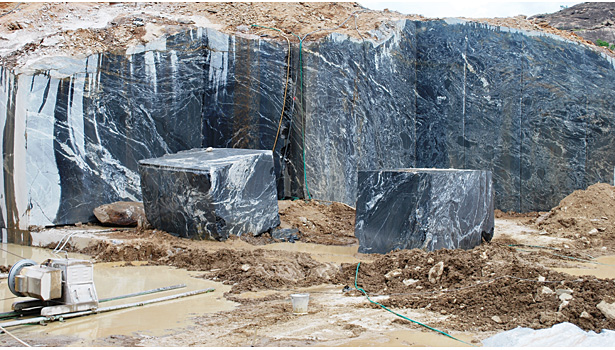Granite Quarries in South Africa Marvels: Checking Out the Quarry Landscape
Granite Quarries in South Africa Marvels: Checking Out the Quarry Landscape
Blog Article
Unveiling the Mysteries of Granite Quarrying: Where Stamina and Elegance Meet
The globe of granite quarrying is a realm where the raw stamina of nature merges with human artistry to create frameworks that stand the examination of time with an air of elegance. From the depths of quarries to the thorough sprucing up in workshops, the procedure of transforming granite into architectural marvels is a complicated dancing of custom and advancement. As we peer into the depths of this ancient craft, we start to uncover the concealed intricacies that form the extremely significance of our developed environment.
The Beginnings of Granite Quarrying
In the record of architectural history, the beginnings of granite quarrying are shrouded in a tapestry of old workmanship and geological marvels. Dating back to old Egypt and Mesopotamia, the removal of granite from quarries marked the start of a trip that would at some point bring about the creation of several of the globe's most renowned frameworks.
Granite quarrying's origins can be traced to the competent craftsmens that recognized the rock's sturdiness and aesthetic allure. Via a combination of primitive devices and sheer resolution, these very early quarry employees uncovered granite blocks that would certainly end up being the foundation of civilizations.
As people developed, so did the techniques of quarrying granite. The Romans, renowned for their design expertise, developed advanced techniques for extracting granite to construct monoliths, holy places, and roadways that stood the test of time.
The heritage of these ancient quarrying practices proceeds to form modern-day design, with granite continuing to be a symbol of toughness and elegance in construction jobs around the world. (granite quarries in south africa)
Tools of the Quarrying Profession
The evolution of granite quarrying techniques from old people to modern times highlights the crucial duty played by the tools of the quarrying profession in shaping the sector's methods. In ancient times, quarrying devices were fundamental, commonly being composed of chisels, hammers, and wedges made from materials like bronze or iron. These devices required significant manpower and time to essence granite blocks from quarries.

Furthermore, the intro of pneumatically-driven devices and high-powered machinery has actually substantially reduced the physical labor needed in quarrying procedures, enhancing worker safety and security and performance. As the quarrying industry remains to innovate, the devices of the profession remain at the forefront of driving progression and forming the future of granite extraction.
Extracting Blocks of Granite
Using precision equipment and advanced methods, the removal of granite obstructs from quarries has come to be a sophisticated procedure in the modern-day quarrying industry. Regulated blowing up strategies are then employed to break apart the granite into manageable sections.

Sprucing Up and Ending Up Strategies
To achieve a flawless surface area on granite blocks, experienced artisans utilize a series of careful sprucing up and finishing methods. After the preliminary extraction and forming procedures, the granite blocks undergo a detailed polishing stage to boost their natural elegance and durability.
In enhancement to polishing, ending up strategies are used to additional improve the granite's look. By carefully selecting and using these polishing and ending up strategies, craftsmens can transform raw granite blocks into charming pieces that showcase both stamina and beauty.

Ecological Effect and Sustainability
With the growing focus on environmental consciousness in the industry, granite quarrying techniques are progressively looked at for their impact on all-natural resources and long-term sustainability. In addition, the transport of granite from quarries to processing facilities creates carbon discharges, further contributing to environmental destruction.
To minimize these effects and guarantee sustainability in granite quarrying, industry stakeholders are taking on numerous steps. Executing advanced innovations to minimize energy consumption and water use, redeeming quarried land for view environmental reconstruction, and promoting accountable sourcing practices are some methods being employed. Moreover, accreditations such as the Forest Stewardship Council (FSC) and the Leadership in Energy and Environmental Layout (LEED) help customers recognize eco-friendly granite products.
Conclusion
To conclude, granite quarrying is see this site a procedure that needs specialized tools and strategies to essence blocks of granite and brighten them to a high level of surface. While the ecological effect of quarrying can be significant, initiatives are being made to boost sustainability techniques in the sector. In general, granite quarrying is a fragile equilibrium between harnessing the stamina and elegance of this all-natural rock while minimizing its impact on the environment.
Report this page